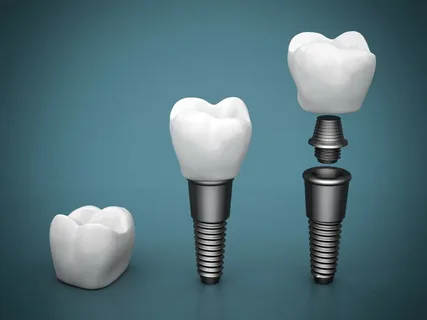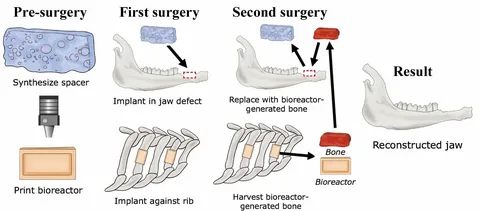Dental Implants
A dental implant is a surgical fixture placed into the jawbone to replace a missing tooth or teeth. It serves as an artificial tooth root, providing a sturdy foundation for a crown, bridge, or denture. Dental implants are renowned for their durability, functionality, and natural appearance, making them a popular choice for tooth replacement.
Dental implants are a long-term, effective solution for replacing missing teeth, restoring both function and aesthetics. Although the process is more time-intensive and costly than other options, the benefits of improved oral health, confidence, and quality of life make it a worthwhile investment for many patients. Always consult with your dentist to determine the best treatment for your needs.
Components of a Dental Implant
Implant Post:
- A titanium or zirconia screw surgically placed into the jawbone to act as the root of the tooth.
Abutment:
- A connector that attaches the implant post to the artificial tooth or crown.
Dental Crown:
- The visible, custom-made artificial tooth that matches the color and shape of natural teeth.
Types of Dental Implants
Endosteal Implants:
- Placed directly into the jawbone.
- The most common type, suitable for patients with healthy jawbone density.
Subperiosteal Implants:
- Positioned on top of the jawbone but beneath the gum tissue.
- Used when there is insufficient jawbone and bone grafting is not an option.
Zygomatic Implants:
- Anchored in the cheekbone (zygoma) instead of the jawbone.
- Suitable for patients with significant bone loss in the upper jaw.
When are Dental Implants Needed?
- To replace one or more missing teeth.
- For improved functionality in chewing and speaking.
- To prevent adjacent teeth from shifting into the gap.
- As a more permanent solution compared to dentures.
- To preserve jawbone structure and prevent bone loss.
Procedure for Getting Dental Implants
Initial Consultation:
- A dentist evaluates your oral health, takes X-rays or 3D scans, and discusses treatment options.
Preparation:
- If necessary, procedures like bone grafting or sinus lifts are performed to ensure adequate jawbone density.
Implant Placement:
- The titanium implant is surgically inserted into the jawbone under local or general anesthesia.
- Healing period: 3–6 months to allow the implant to fuse with the bone (osseointegration).
Abutment Placement:
- Once healing is complete, an abutment is attached to the implant post.
Crown Placement:
- A custom-made dental crown is secured onto the abutment, completing the restoration.
Key Feature about Dental Implants

Long-Lasting Durability

Natural Look and Feel

Prevents Bone Loss
Frequently asked questions
Here are descriptions for FAQs about Dental Implants to provide a clear understanding:
Dental implants are titanium posts surgically placed into the jawbone to replace missing teeth. They act as artificial tooth roots and support crowns, bridges, or dentures.
With proper care, dental implants can last 20+ years or even a lifetime. Regular dental checkups and good oral hygiene are crucial for longevity.
The procedure is performed under local anesthesia, so it is generally pain-free. Afterward, there may be some discomfort, which can be managed with painkillers. Healing takes a few weeks to months.
Ideal candidates are individuals with:
- Healthy gums
- Adequate jawbone density
- A commitment to maintaining oral hygiene
- No active gum disease or severe health issues
The process typically takes 3–6 months. This includes the initial placement of the implant, healing time for osseointegration (bone fusion), and attachment of the crown.

